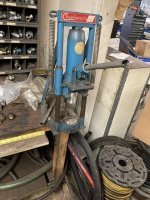Toledo Hydraulic - Fast Shipping, Low Prices, Live Customer Service Cut Off Blades
Advice from real knowledgeable people. Our live customer service will answer all of your questions. We might be a new company but with over 10 years experience in the industry we can help you through the complete buying process.

